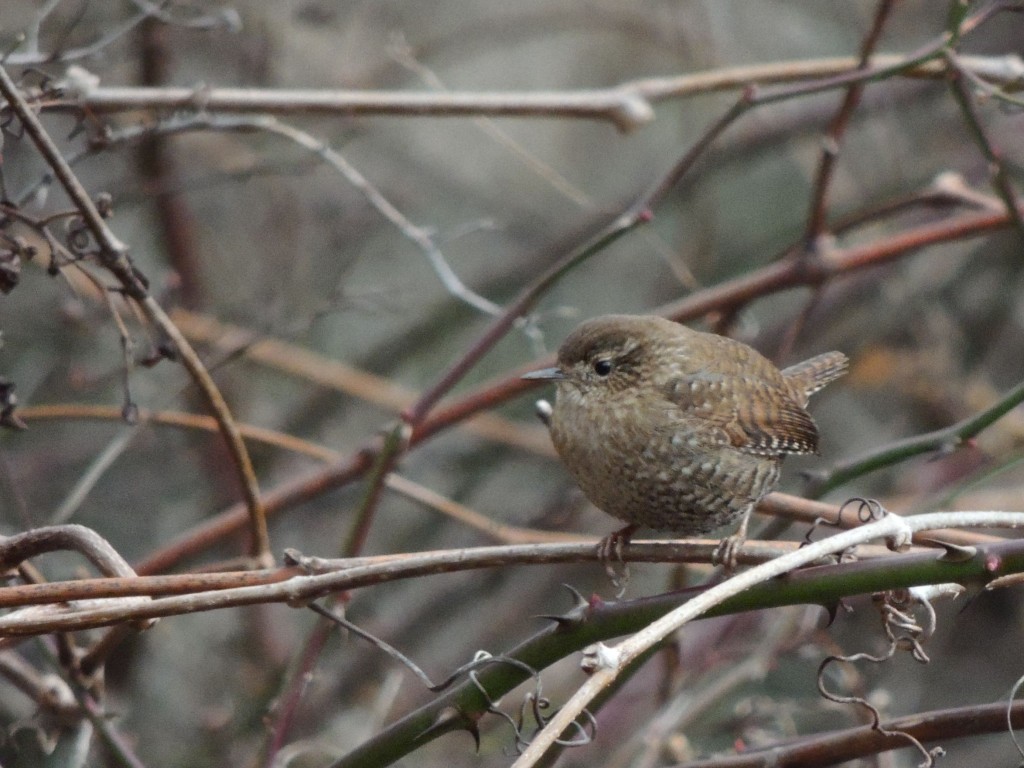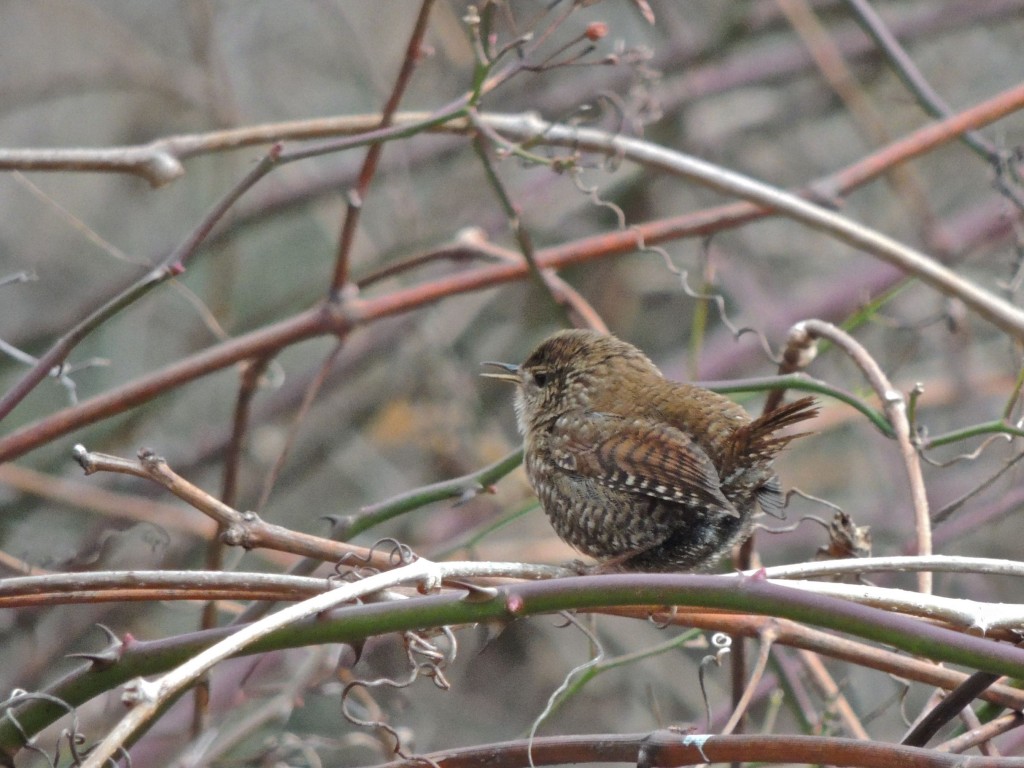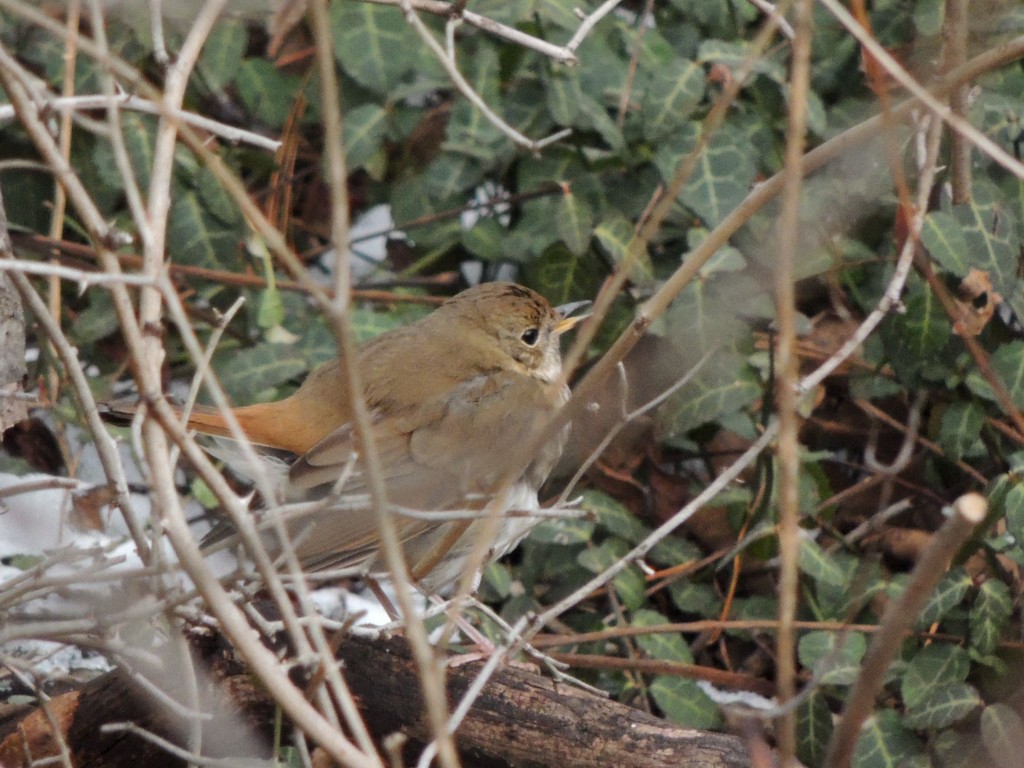3 January 2016. Sedgewick Park, Oakville ON. When the cold winds of January set their teeth, birding treats are few and far between. I usually manage to find enough on my census walks to satisfy my soul but there are many birders for whom the New Year is the start of their 2016 list. I hear about all the discoveries through our on-line network, it can make the blood run quicker at times like this. This morning I was reminded of a handful of summer birds that still linger around a nearby sewage treatment plant. Without going into too much detail, sewage treatment plants process warm water and consequently sustain much peripheral insect life, and insects mean food for birds.
That the sewage treatment plant is surrounded by dense woodland, lots of undergrowth and a small creek it makes it a viable overwintering spot.

My two hours there in knuckle-stiffening cold, produced several nice little birds: two Winter Wrens, a Western Palm Warbler, two (maybe three) White-throated Sparrows, a Ruby-crowned Kinglet and a pleasingly bright Orange-crowned Warbler among them. Perhaps the Orange-crowned Warbler should have been bird of the day, but somehow it was upstaged by a Hermit Thrush staying low and skulking through thickets of old grape, blackberry and ivy. When it thought no-one was looking it dashed out for a shot at whatever insects may be around.
I’m not sure quite why the Hermit Thrush stole the show, but it did. Quite simply it made me exclaim wow! (inwardly anyway); and that’s all it takes. They are modest birds, not showy and never overtly seeking attention yet, when it comes to spring song, they’ll stop you in your tracks with their brief cascade of liquid fluted notes.


Another great report and yet another to read as soon as I complete this comment. Looking at the photos f your Winter Wren I could not but think how similar they are to our European (“Jenny”) Wrens Toglodytes troglodytes.
The observation about the Winter Wren and the European ‘Jenny’ Wren is timely, fitting and instructive. As recently as a decade ago the European and the Winter Wren were considered one species, Troglodytes troglodytes. Recently taxonomists decided it was time to shake things up and split it into 3 species: T.troglodytes, T. hiemalis, and T. pacificus (European, Winter and Pacific Wrens respectively). There may be more splitting to come. In my limited and amateur experience, both the appearance and songs of European and Winter Wrens are essentially indistinguishable. I have seen just one Pacific Wren, it looked just like the other two.
The wren family originated in the New World. There are eleven species in North America alone.